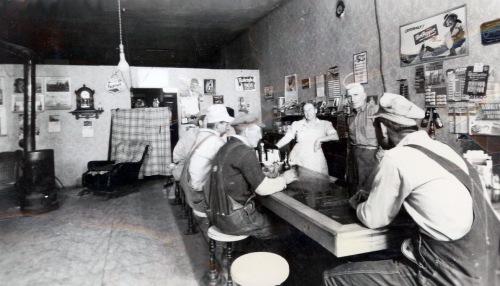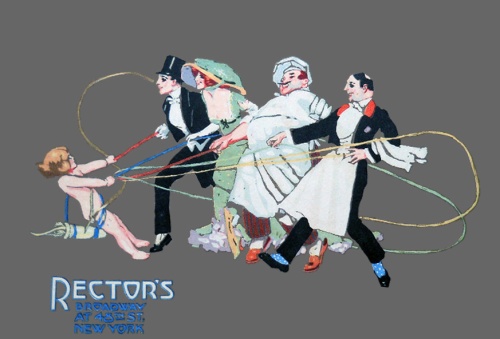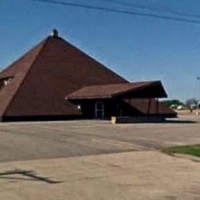 Luxury restaurants are more likely to become memorialized by time, but often ordinary restaurants have a history that is equally rich and played a more significant role in the everyday functioning of society.
Luxury restaurants are more likely to become memorialized by time, but often ordinary restaurants have a history that is equally rich and played a more significant role in the everyday functioning of society.
That was certainly true of a restaurant that opened in New York City’s “Newspaper Row” in 1858 under the name of its two proprietors, Crook & Duff. The popular restaurant persisted until at least 1906 under nine different names and with four different addresses. It was considered not only a fine place to eat — “a marvel of gastronomic entertainment” – but also a depot where ideas were exchanged.
 Proprietor John Crook was already an old hand in the restaurant business by 1858, having learned the business from his uncle who ran an eating stand in Fulton Market. Crook then went into business with a brother, and next ran several places on his own before he and theatrical manager John Duff opened a restaurant in the newly constructed New York Times building on Park Row. [Unfortunately no signs for the restaurant are visible in the 1874 photograph shown above.] It was an excellent location since City Hall, the main Post Office, a new court building, and many newspaper and periodical offices were located close by. Journalists and printers especially, with their odd hours and relative freedom to roam the city, were frequent patrons of eating and drinking places such as Crook & Duff, aka Crook, Fox & Duff; Crook, Fox & Nash; Nash & Fuller; Nash & Crook; Nash & Brush; George S. Brush; Brush & Foy; and Foy & Crook.
Proprietor John Crook was already an old hand in the restaurant business by 1858, having learned the business from his uncle who ran an eating stand in Fulton Market. Crook then went into business with a brother, and next ran several places on his own before he and theatrical manager John Duff opened a restaurant in the newly constructed New York Times building on Park Row. [Unfortunately no signs for the restaurant are visible in the 1874 photograph shown above.] It was an excellent location since City Hall, the main Post Office, a new court building, and many newspaper and periodical offices were located close by. Journalists and printers especially, with their odd hours and relative freedom to roam the city, were frequent patrons of eating and drinking places such as Crook & Duff, aka Crook, Fox & Duff; Crook, Fox & Nash; Nash & Fuller; Nash & Crook; Nash & Brush; George S. Brush; Brush & Foy; and Foy & Crook.
The people of prominence who ate at Crook & Duff and its successors were numerous, many of them lawyers, journalists, business men, and political figures. Feminist publishers of Woodhull & Claflin’s Weekly, Victoria Woodhull and Tennessee “Tennie” Claflin, were frequent patrons in the 1870s – probably eating in a room reserved for ladies (assuming they found that acceptable). The restaurant was popular with women clerical workers in the 1880s when their numbers were on the increase.
The restaurant remained in the Times building, occupying the basement and much of the first floor for thirty years, while doing business under five different names, the best known and longest lasting being Nash & Crook. In 1888 it moved a short distance to 16 Park Place.
Nash & Crook (etc.) was known for good food, reasonable prices, and fast, expert service. Broiled oysters and corned beef hash were specialties. Fruits and vegetables came from the Oneida Community, a religious commune in upstate New York. The bar did a brisk business in gin slings and brandy smashes, especially during election season.
 Serving food from early morning until late at night, the restaurant was a high-volume business, dishing out up to 2,000 mid-day meals daily. In 1870 it claimed to have the largest dining room in the U.S. The lunch counter was 60 feet long. Even so, from noon to 3 p.m. it would often become so crowded that customers would stand and eat from plates in their hands. Many customers were regulars, including men who took all their meals there – and only there – for decades.
Serving food from early morning until late at night, the restaurant was a high-volume business, dishing out up to 2,000 mid-day meals daily. In 1870 it claimed to have the largest dining room in the U.S. The lunch counter was 60 feet long. Even so, from noon to 3 p.m. it would often become so crowded that customers would stand and eat from plates in their hands. Many customers were regulars, including men who took all their meals there – and only there – for decades.
Reputedly it was the second restaurant in New York City to hire African-American waiters. During the Civil War draft riots of July 1863 when white mobs attacked Black men, the restaurant sheltered its staff in the basement. Many of the staff from both races were long-term employees. A Black waiter, John Thomas Cooper, worked at the restaurant from 1859 until his death in 1893, becoming a favorite for his sense of humor.
As late as 1927 a letter to the editor of the New York Times mourned the loss of Nash & Crook’s corned-beef hash.
© Jan Whitaker, 2015











































 It's great to hear from readers and I take time to answer queries. I can't always find what you are looking for, but I do appreciate getting thank yous no matter what the outcome.
It's great to hear from readers and I take time to answer queries. I can't always find what you are looking for, but I do appreciate getting thank yous no matter what the outcome.


